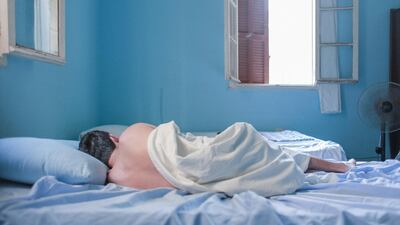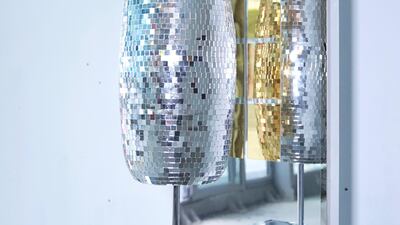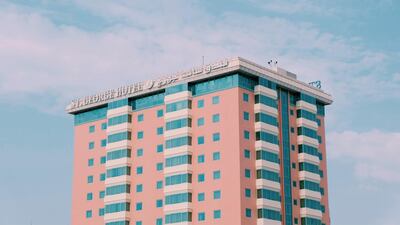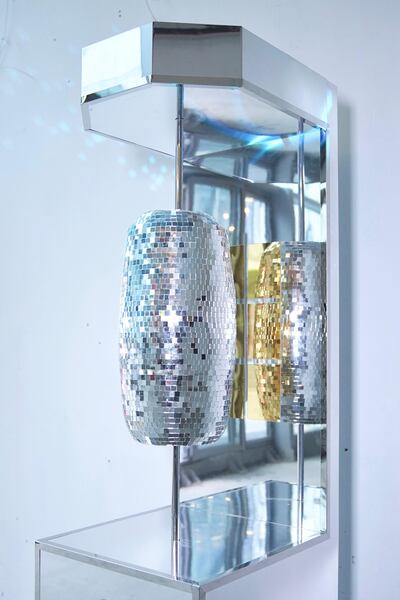Does the UAE feel like home? This is the first of a series of questions posed by artist Christopher Benton. It continues: Where is home for you? Do you feel like an alien in your own country? How long do you think you’ll stay in UAE?
These come in a form of a poem, displayed at the entrance of an exhibition Benton has curated titled Do You See Me How I See You?
On view at the restaurant and art space maisan15, the show is about the notion of home in the UAE, and the many ways the concept can be fractured or muddied for locals and residents alike in a country that is fast changing.
Do You See Me How I See You? features 11 artists from places such as the UAE, the US, Switzerland, Philippines, Kuwait and India, namely Ahmad Bouholaigah, Ashay Bhave, Augustine Paredes, Esmat Rabi, Layan Attari, Maxime Cramatte of Satwa 3000, Mohamed Khalid, Rakan Ghresi, Rami Farook, Sultan Khamis Al Remeithi and Benton himself. Their works range from video and photography to installations and sculpture.
Benton, who is American, had put together the show after meeting with Rami Farook, a fellow artist and art collector who runs maisan15. Farook was looking to put on an art exhibit in the space that would be curated by an emerging artist, curator or critic. Benton fit the bill and conceptualised Do You See Me How I See You?, making it the second official exhibition at the space.
Here, the artist and curator shares insights about going outside the institutional model to showcase works and what home means for him.
The question of ‘home’ in the UAE is one of those topics that is often discussed, but rarely resolved – when it came to selecting the artists and works for this show, how did you want to address the issue of ‘home’ differently?
Home is such a familiar curatorial topic in the UAE to the point of being a cliche, so it was important that I broached it from a new angle. Instead of a jargon-filled wall text, the show was introduced with a poem that talks about doing border runs, being stateless, and saving money to go back to your home country, wherever that is.
These are common shared experiences that don’t get talked about much in public, but it brings up critical questions. Is home your passport, where your parents live, or is it where you are now?
In his sculpture Subscriber Identity Module, artist Ashay Bhave postulates that for the transient expat, home is whatever SIM card is in your phone. My theory was that these sort of conflicts are explicit in the work of young artists.
It was also essential to include artists who represent the multiplicity of identities and experiences here: Augustine Paredes is from the Philippines, Ashay Bhave is Indian, Mohamed Khalid grew up in the UAE, and many of the other artists have such complex backgrounds that they have difficulty expressing where they’re from at all. Their strategies also differ wildly: Esmat Rabi and Sultan Khamis Al Remeithi – both Emirati artists who’ve lived aboard – use nostalgia as a pose to try to hold on to a place that’s ever-changing.
Meanwhile artists like Layan Attari and Rakan Ghresi use humor as a way of subversively delivering social critique. It goes without saying that while America is called a “melting pot,” there’s no place as worldly and integrated as the UAE.
Independently organised shows like these are not very common in the UAE. How does this impact you and the artists in the show, and the UAE art scene as a whole?
Outside bait15 in Abu Dhabi, nearly all of the spaces in UAE are commercial or institutional, which fosters a specific sort of art that is more about ‘credentialisation’, formality and academic-centered work.
At the same time, I see little support for street art, pop art or less formal ways of making, for example. Ironically, that kind of art is probably the most popular with audiences and would lead to more footfall. That’s why grassroots and DIY spaces are essential.
In this show, I really wanted to platform people who seemed at the edges of the art world: most of the artists have commercial creative practices as animators, directors, photographers or graphic designers. I hope this show proves that people from these backgrounds have potent things to say.
How you do expect the works to be experienced in their current setting as opposed to a gallery?
maisan15 is a hybrid space that functions as a cafe, restaurant, library and gallery. People chiefly come to the space to have good food, but they also encounter the art as a consequence of that.
I love the idea of legibility and seduction: so a guest might be piqued by a piece of art that is strange or beautiful or spectacular, and then will be inspired to inspect more, ask questions or share it online. In that way, I chose artists whose work is accessible at the surface, but that has tension upon closer inspection. Satwa 3000's Shawarma Disco Soundsystem sculpture was a big hit on Instagram; but it also functions as an elegy to neighborhoods like Satwa that are quickly gentrifying.
What is your own relationship to the UAE? What keeps you here and how long do you plan to stay?
I’m from Virginia and moved here from New York City eight years ago. My mother Candace moved here first, to take a job as a teacher. Back then Abu Dhabi was aggressively and lavishly hiring American teachers.
Like many, I remain here because the opportunities can’t be beat and the comforts are world-class. I’ll be here as long as the country will continue to welcome me. Perhaps one day I hope to operate a space here to support emerging artists, creatives and makers.
Do You See Me How I See You? is currently on view at maisan15, with works on sale. Recently, the artists have published a 60-page catalogue for the exhibition, available at the space











